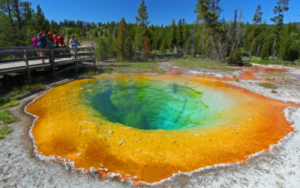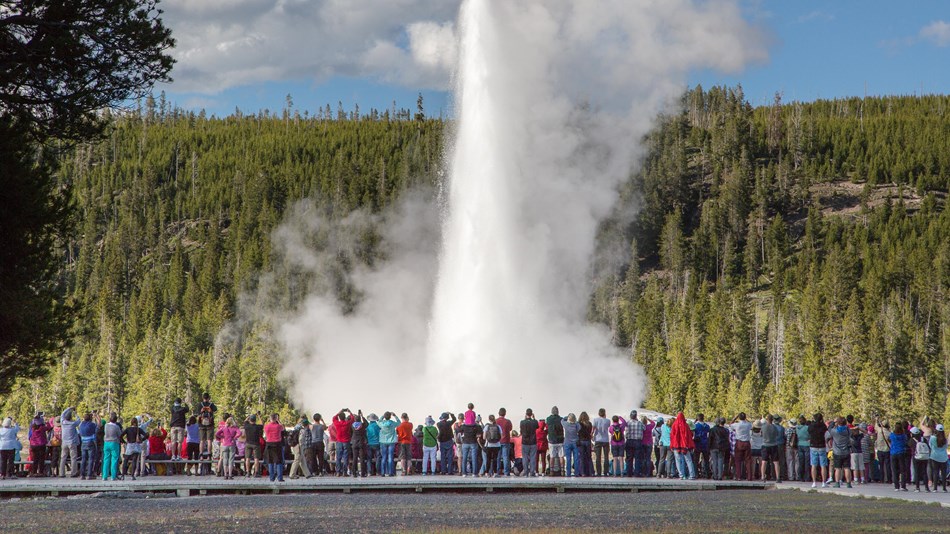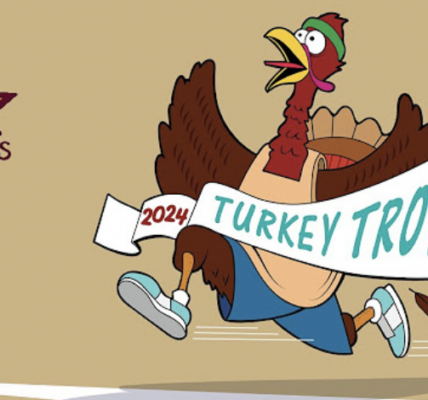Park staffing, services crippled by COVID; Yellowstone and Grand Teton experience will be different in 2020
By Mike Koshmrl
Jackson Hole News&Guide
Via- Wyoming News Exchange

JACKSON — In an ordinary summer a destination park as famous as Yellowstone brings on some 500 seasonal employees, about tripling its staff, to help handle the crush of 4-million-plus tourists drawn from around the world.
In a world changed by the threat of an infectious pandemic, that influx of employees will be whittled down to approximately 200 seasonal employees — a 60% reduction, at least in the early summer. The reason is that those seasonal staffers will each be given their own bedroom and bathroom, a restriction meant to prevent spread of the novel coronavirus and protect Yellowstone’s workers.
“The good news about that is if an employee gets sick, it will be easier to isolate them,” Yellowstone Superintendent Cam Sholly said in a call with regional business owners and elected officials on Monday. “The bad news about that is if we had a two-bedroom apartment — where we would normally put two employees — right now to start we’re only putting one.”
For a park that depends on group and dormitory-style housing the staffing reductions resulting from the rooming changes are “severe,” he said.
Grand Teton National Park is “still working through” its summer staffing plans, Acting Superintendent Gopaul Noojibail said in the same call, but is looking at a potential 40% loss of beds and thus seasonal staff.
The private businesses that run Yellowstone and Grand Teton’s hotels and restaurants via concession contracts will function this summer with the same directive: no more than one employee per bathroom or bedroom.
“They’re in a much tougher situation than the Park Service is in many ways,” Sholly said. “First of all they bring on a lot more employees than we do. Most of those employees that they bring on do live in dormitory-style housing.”
The COVID-19-driven changes in store for those concessioners — chiefly Xanterra in Yellowstone and Grand Teton Lodge Company in Teton park — are dramatic. Xanterra is trimming its seasonal workforce by nearly 80%, and will be operating with only about 800 seasonal staff instead of the usual 3,500, according to General Manager Mike Keller.
Numbers for Grand Teton concessionaire Grand Teton Lodge Company are less clear. Reached Tuesday, Vice President Alex Klein declined an interview request.
Sholly and Grand Teton Acting Superintendent Noojibail both stressed in the Monday conference calls that summer plans are unpredictable, in flux, and that many decisions, such as about when and what to open, are still off in the future.
Yellowstone and Grand Teton are coordinating closely with their concessionaires, even aiming to time openings of areas and services in conjunction with each other.
But Xanterra’s Keller said he’s having to make some summer-long decisions now, such as with staffing. With only 800 seasonal employees this year — 2,700 fewer than normal — running cabins, campgrounds and take-out only restaurants in places like Lake, Canyon, Mammoth, Old Faithful, Tower and elsewhere will be difficult.
“We reached a point where we had to make a decision to go forward with something,” Keller told the News&Guide in an interview. “The safety and the welfare of employees and guests is paramount in this decision.”
Some decisions about Yellowstone services have already been made, while others still linger.
“Cabins with private baths will be available in Yellowstone, that’s a definite,” Keller said. “We’re still evaluating hotels and lodges.”
If hotels do not open, which is the tentative plan, Keller will house much of his seasonal workforce at hotels in Mammoth and Canyon.
Cuisine in the park will also take a turn in response to the novel coronavirus and the myriad changes it is forcing. Grab-and-go food services are assured, but other eateries will have to wait for 2021.
“None of the sit-down dining rooms are going to open,” Keller said, “because you can’t have that many people in a confined space.”
It’s difficult to gauge tourists’ interest in venturing hundreds or thousands of miles to vacation in the Greater Yellowstone Ecosystem. But by one measure — advanced bookings for lodging — there will be millions of folks lining up to come after months of a cooped-up lifestyle.
“If there’s anything that’s giving us any real optimism about this whole thing it’s that June 15 on, we are still solid,” Keller said. “We are still sold out. There’s still avid demand for camping in Yellowstone.”
While some international visitors have already been canceling their fall Yellowstone trips, domestic travelers “by every indicator” are so far undeterred, he said.
Jackson town councilor and economist Jonathan Schechter has used crowdsourcing to try to make predictions about when and how many tourists will arrive. Through his organization, the Charture Institute, he launched an online survey aimed at predicting how COVID-19 would affect Jackson Hole’s taxable sales. He expected a couple hundred participants, but by the time he stopped the survey last week, 857 people had weighed in.
“This has thrown everybody so far off their bearings that one conclusion to take out of the 857 responses is that this was a way that people could do something, however small, to try to help us as a community get our arms around this big, horrible, completely undefined thing,” Schechter said.
And when did residents guess that Jackson Hole’s tourism engine would start revving and roaring?
Some 62% of Schechter’s survey respondents estimate local businesses will not fully reopen until July 1 or later, and 72% estimated Americans would refrain from road-tripping before July.
Mass air travel to Jackson Hole is likely on hold for even longer, survey participants guessed. Some 86% predicted Americans wouldn’t feel comfortable flying until July 1 or later, and nearly half of respondents guessed people would refrain from air travel until September or even later.

How will that hit volumes of tourists, and thus businesses’ bottom lines?
Compared to 2019, the survey predicted spring would attract a 69% fewer people. The forecasted summertime drop was 42%, followed by a 26% fall decline.
Jackson Hole Chamber of Commerce President Anna Olson said that the economic indicators she has reviewed suggest that there will be regional tourists coming en masse before people start driving across the country.
Coloradoans will likely come, she said, before the New Yorkers.
“This is like having to anticipate what some are referring to a sunrise, as opposed to a light switch,” Olson said. “It’s going to be slow and gradual.”
Businesses in Jackson are facing the same challenges as Yellowstone concessionaires, having to plan for ramping up their operations amid a lot of unknown. Employees usually brought in via J1 Visas and the H-2B nonimmigrant program are likely out of the picture this year, Olson said, and employers are going to have to get creative and look within the community.
“I do think, to begin with, we will be fine with employees,” she said, “but the longer and longer we’re not getting revenue, the harder and harder it gets for the businesses.”
For now Yellowstone and Grand Teton are off-limits, joining most national parks that have closed off their entry gates to discourage travel and tourism. No reopening date has been announced, though concessionaires are targeting the Memorial Day weekend. No employees from either park have tested positive for the novel coronavirus, Sholly and Noojibail said.
Were they to hypothetically open tomorrow, people could get in for free, owing to a March 18 U.S. Department of the Interior decision to waive entry fees to encourage use of the outdoors and national parks as a COVID-19 getaway. Interior Secretary David Bernhardt has yet to lay out a plan for lifting that fee waiver, Sholly said in the phone call.
“That income is critical to park operations,” he said. “I would advocate that once the parks open we do collect fees.”
Yellowstone in recent years has retained about $11 million annually from its entrance fee collections. Another $10 million or so filters in from franchise fees imposed on concessionaires like Xanterra, which are planning to reduce their own operations. Between the two it’s a $20 million pot of money that supplements Yellowstone’s base budget allocation from the federal government. It also depends on tourism.
“It’s conceivable … that there are going to be potentially substantial shortfalls from those two funding sources,” Sholly said.
Northwest Wyoming visitors will notice a slightly different Yellowstone and Grand Teton this summer starting at the entry gates.
There will be plexiglass inserts protecting masked fee-collecting employees who will work in stations with new forced-air ventilation systems. Cash will likely not be allowed as a payment option. Passes will be viewed, not touched, Sholly said.
“I don’t know when we’re going to open entrance stations,” he said. “But when we are ready to open and collect fees we will have taken the right mitigation efforts to protect the employees and visitors.”






